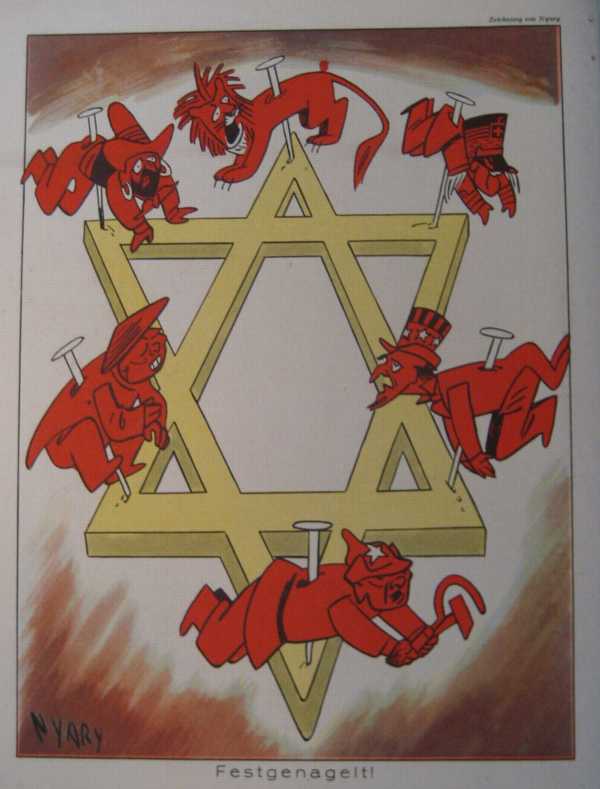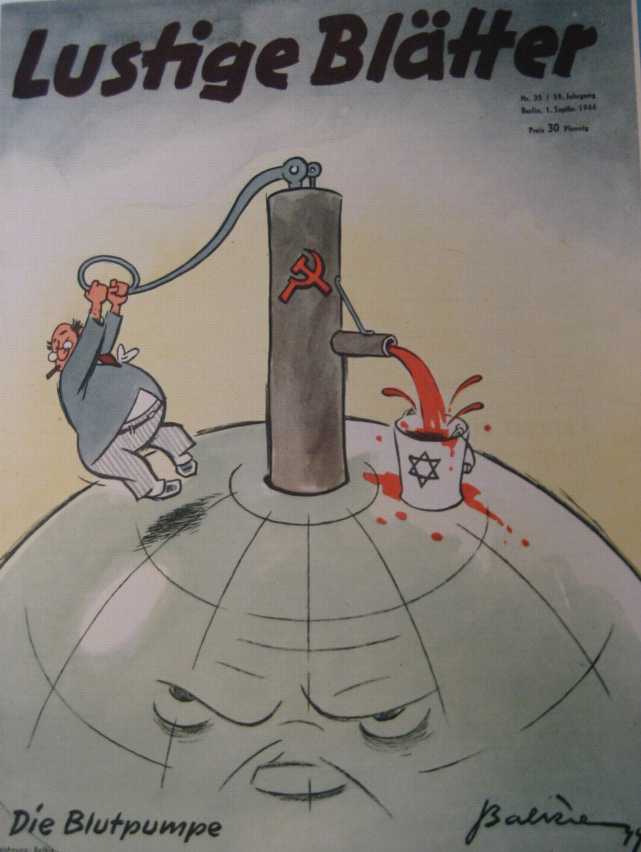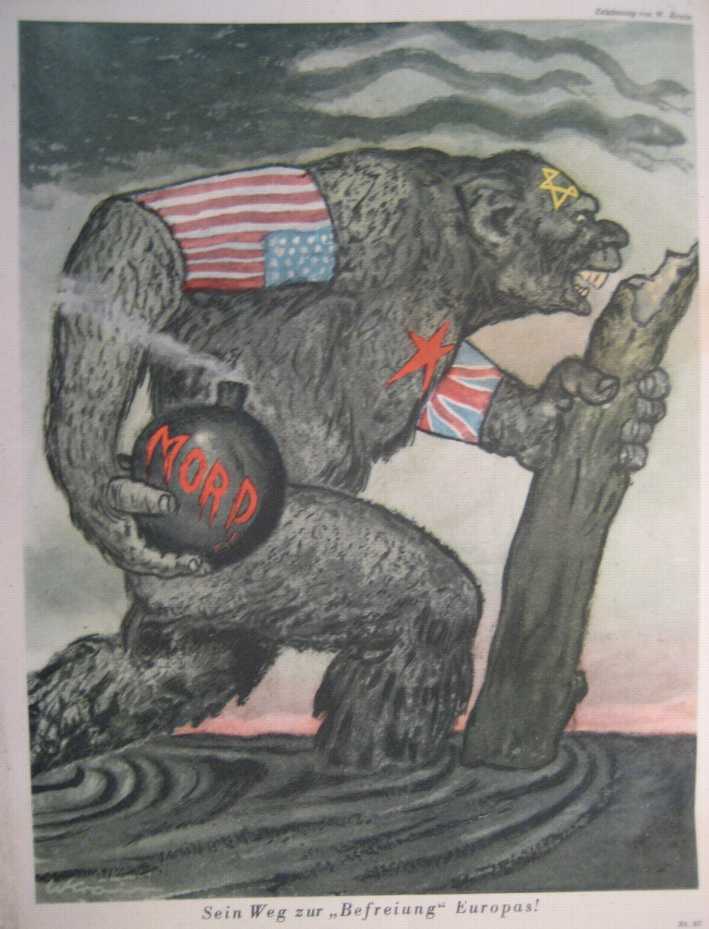Nazi Cartoons from Lustige Blätter
Background: These World War II era cartoons are from Lustige Blätter, a weekly German humor magazine. It predated the Nazi takeover, but adjusted quite nicely to the new era. The magazine did not carry caricatures, even friendly ones, of Hitler or other Nazi leaders. There were many caricatures of Winston Churchill, Franklin Roosevelt, and Joseph Stalin. These issues, all published during World War II, contain a mixture of overt propaganda satirizing enemy countries as well as relatively apolitical jokes and cartoons. There is also a lot of anti-Semitic material. For similar material, see a page on the Fliegende Blätter, another weekly humor magazine.
For those who read German, the whole run (1896-1944) of the most prominent German satirical magazine, Simplicissimus, is available on-line. The site also includes a variety of indexes to the material. This is an extraordinarily valuable resource.
Source: My own collection.
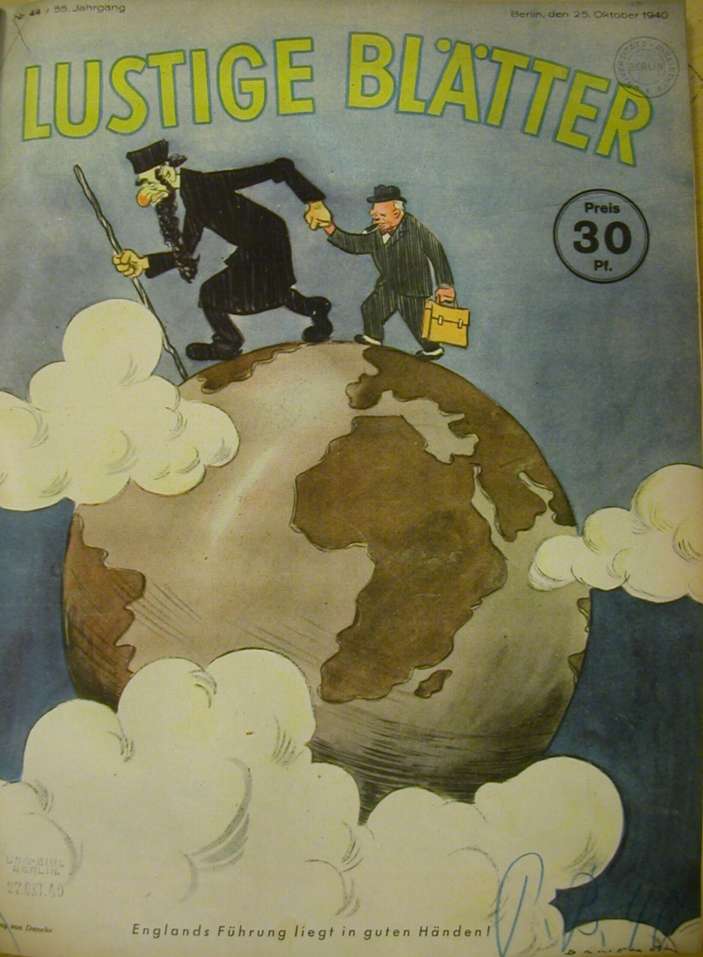
The caption translates as: “England’s leadership is in good hands.” The main focus of the magazine during 1940 was the English, but there were some anti-Semitic covers like this one.
Source: Issue #44/1940
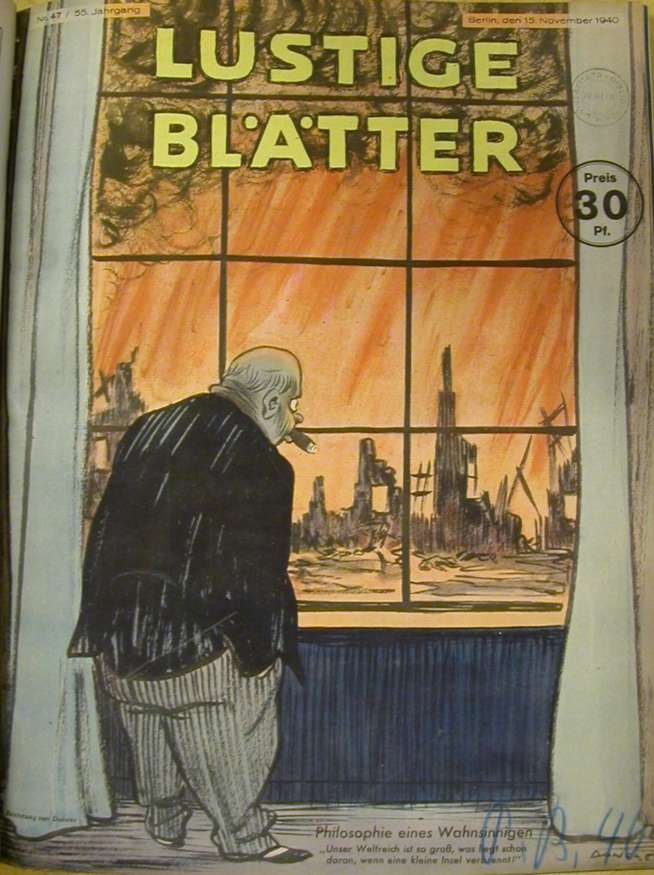
The caption: “Philosophy of a Madman.” Churchill is saying: “Our empire is so large that it hardly matters if a small island burns down.”
Source: Issue #47/1940
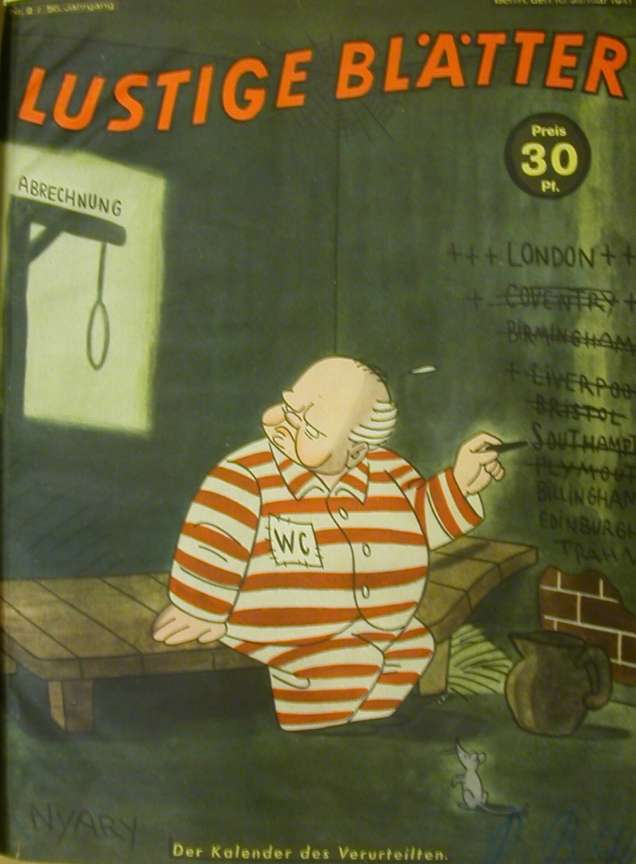
The caption: “The Calendar of a Condemned Man.” Churchill scratches off the names of bombed English cities as the gallows waits behind him.
Source: Issue #1/1941
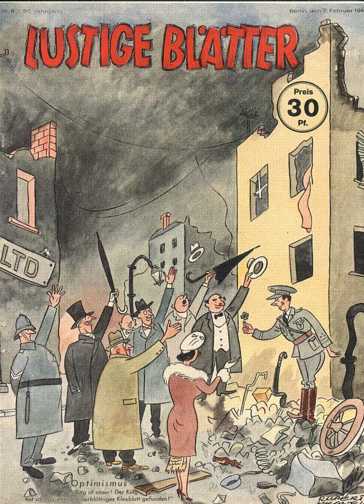
The caption: “Optimism: ‘Victory is ours! The King has found another four-leaf clover!’” When Allied bombing later did similar things to German cities, Lustige Blätter joined the propaganda campaign claiming that Germany was the victim of “terror bombing.”
Source: Issue #7/1941
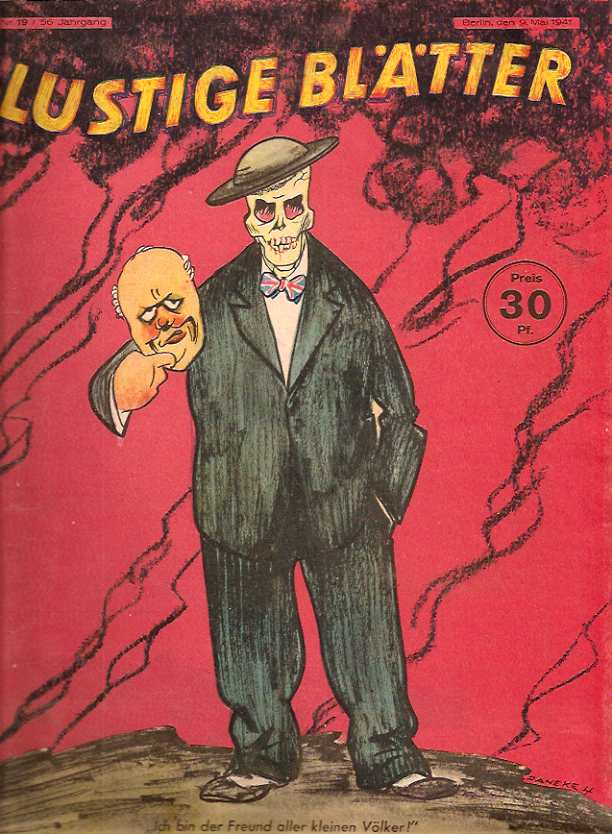
The caption: “I am the friend of all the small countries!” Winston Churchill removes his mask. A standard Nazi propaganda argument was that England used smaller nations, tossing them aside when they were no longer useful.
Source: Issue #19/1941
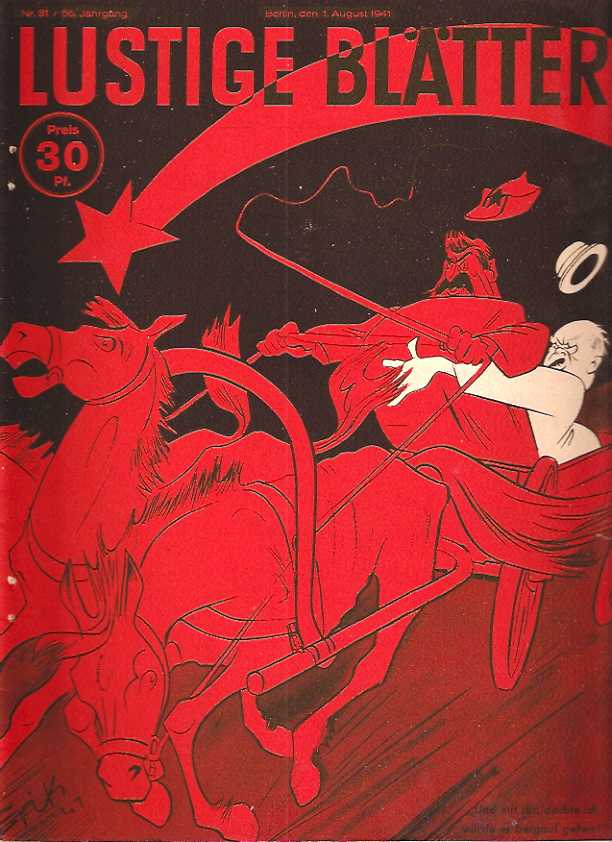
The caption: “I thought things would start going better for us once you were on our side!” This is one of the first cartoons published after the invasion of the Soviet Union on 22 June 1941. Churchill is holding on to Stalin, who is trying to hold the reins while the Soviet star falls in the background.
Source: Issue #31/1941
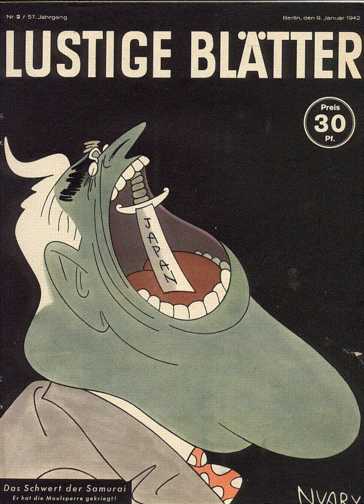
This issue, dated just after the Japanese attacked Pearl Harbor, is captioned: “The Sword of the Samurai. It defeated the big mouth.”
Source: Issue #2/1942
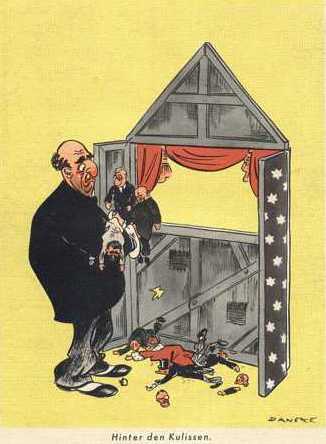
The caption: “Behind the Curtains.” A Jewish puppeteer is looking nervously at his remaining puppets: Roosevelt, Churchill, and Stalin. On the floor are broken former puppets, including Neville Chamberlain.
Source: Issue #5/1942
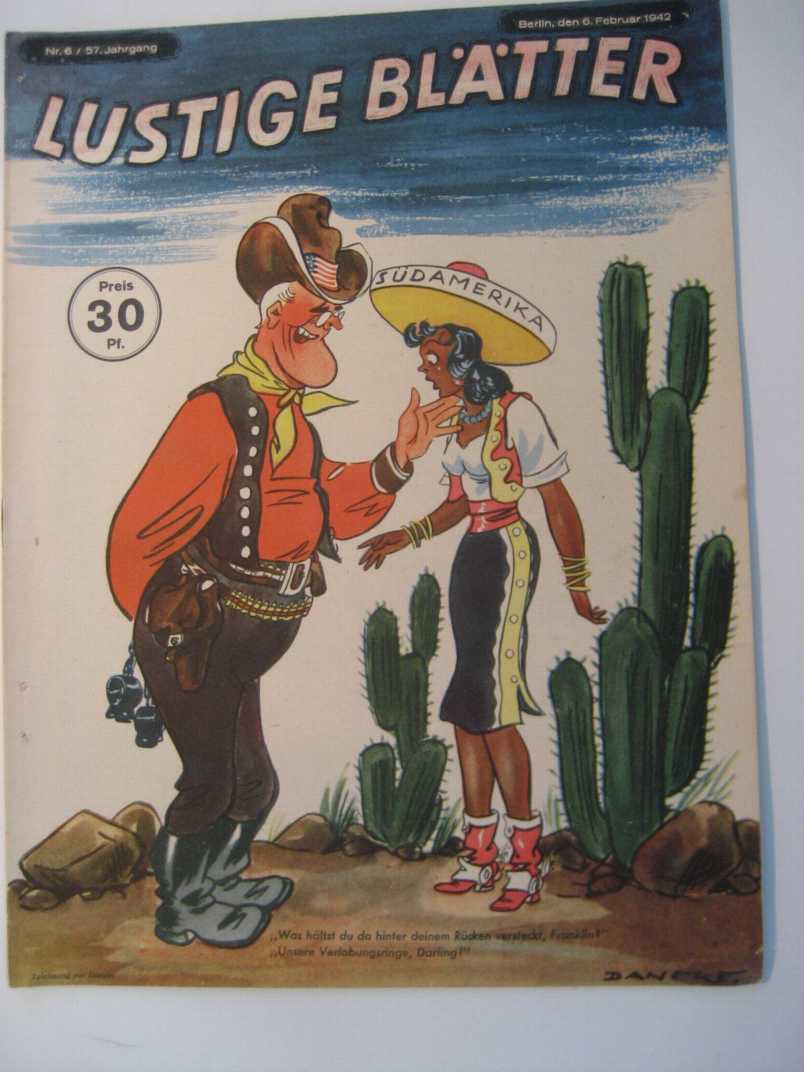
The caption: “What do you have hidden behind your back, Franklin?” “Our engagement rings.” A regular theme was that the United States was building an empire during the war.
Source: Issue #6/1942
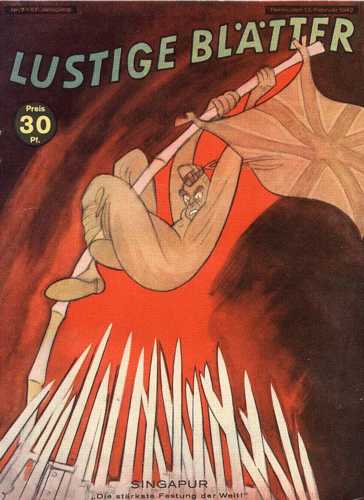
The caption: “Singapore: The Strongest Fortress in the World!” Britain tries to escape Japanese bayonets. Japan’s initial successes in the East gave a considerable boost to German morale.
Source: Issue #7/1942
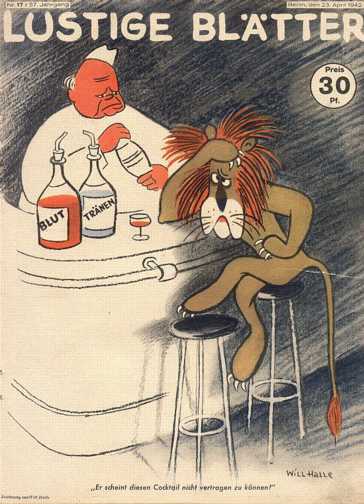
The caption: “This cocktail doesn't seem to agree with him.” Winston Churchill has just served a mixture of blood and tears (toil and sweat seem to have been skipped) to a scrawny and unhappy looking British lion.
Source: Issue #17/1942
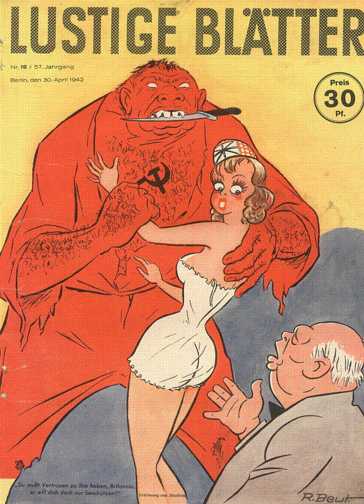
The caption: “You have to trust him, Britannia. He only wants to protect you!” Winston Churchill tries to reassure England that an alliance with Soviet Russia is a good idea.
Source: Issue #18/1942
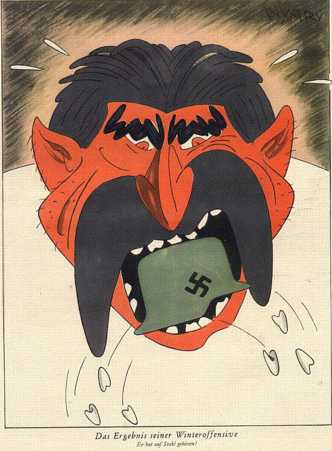
The caption: “The results of his winter offensive. He has bitten steel!” This cartoon minimizes the results of Soviet offensives over the winter of 1941-42. In truth, the Nazis had been unpleasantly surprised by the force of that offensive. As some generals revealed after the war, the German front had nearly collapsed.
Source: Issue #22/1942
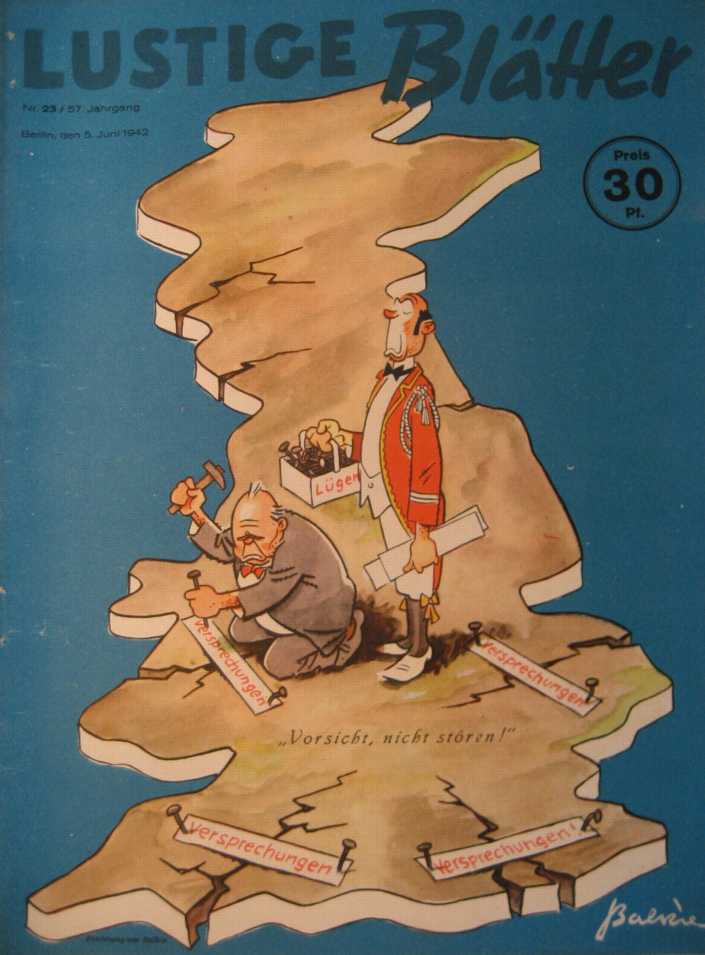
Winston Churchill is trying to hold England together with promises. He is hammering them in with nails from a basket titled “Lies.”
Source: Issue #23/1942
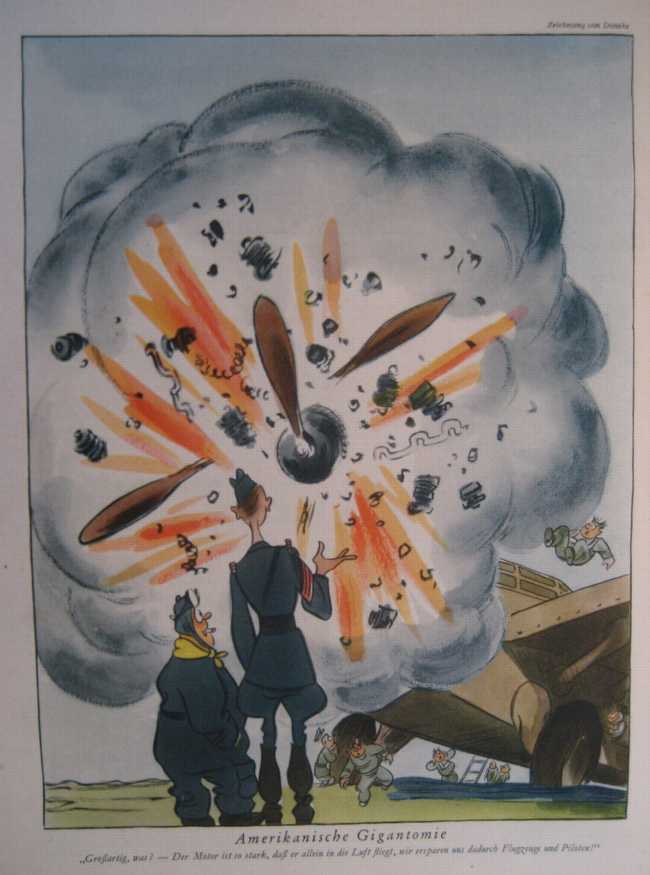
It took a while for the Nazis to take the Americans seriously. The title of this cartoon: “American Giganticism.” The caption: “Isn’t it wonderful? The motor is so powerful that it flies all by itself, saving us the airplane and pilots.”
Source: Issue #23/1942
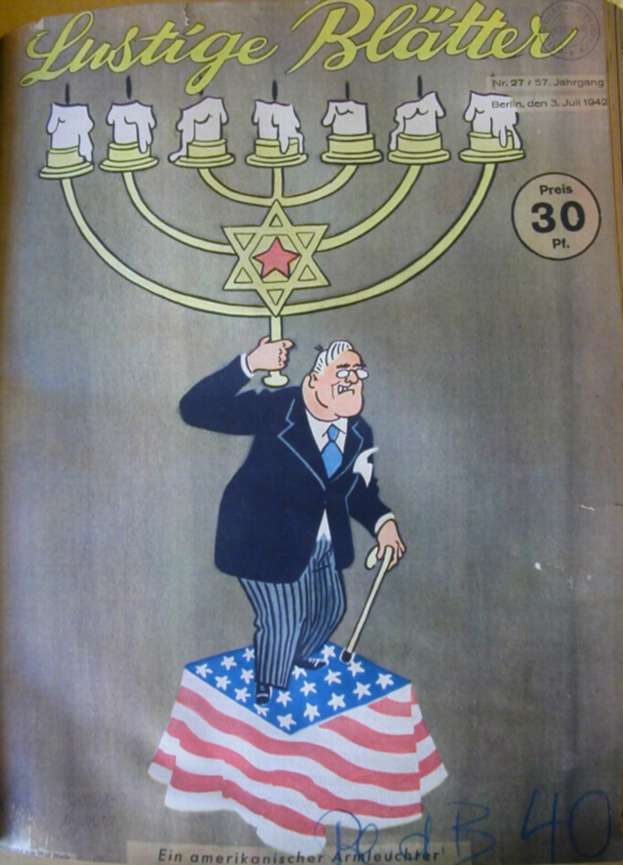
The caption: “American Candelabra.” The anti-Semitic theme suggests that Roosevelt is serving the Jews.
Source: Issue #27/1942
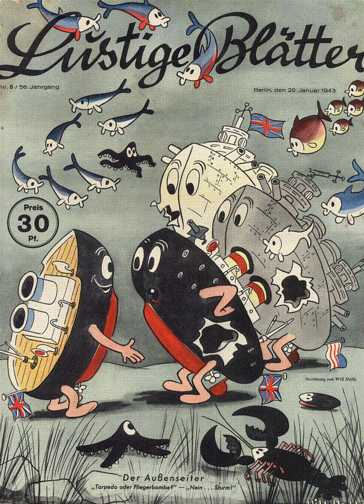
The caption: “The Outsider. ‘Torpedo or Bomb?’ ‘Neither — it was a storm!’” This cartoon appeared at the end of January as Nazi troops in Stalingrad were surrendering. About the only good news the Germans had was with the submarine fleet.
Source: Issue #5/1943
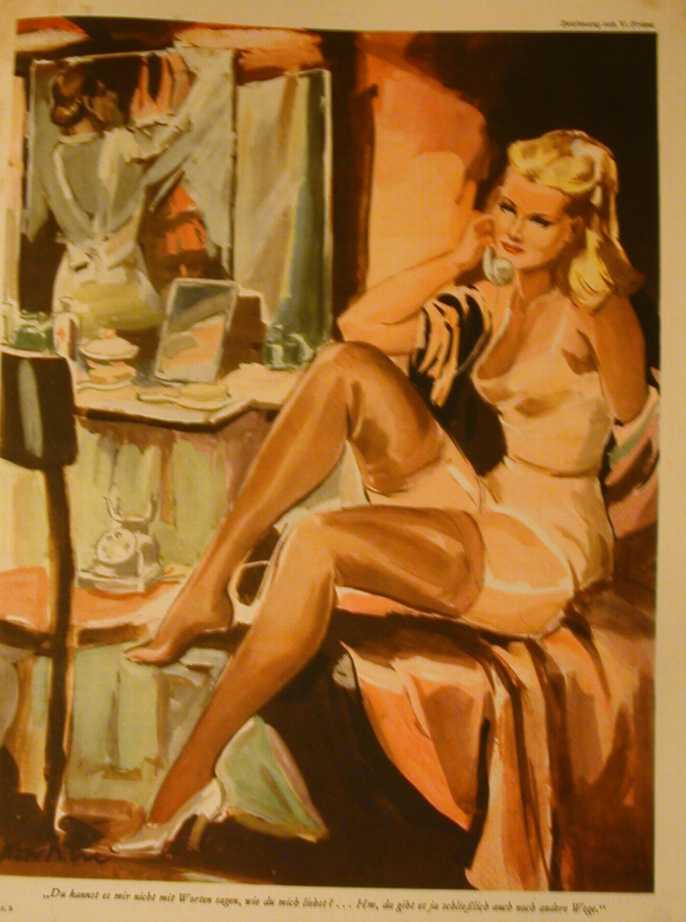
Besides political cartoons, Lustige Blätter also carried a range of other cartoons. Each issue generally had at least one cartoon of scantily-clad women, generally talking about their love lives. Here is a typical example. The woman, talking on the phone, says: “You can’t express in words how much you love me? Well, there are other ways...”
Source: Issue #5/1943
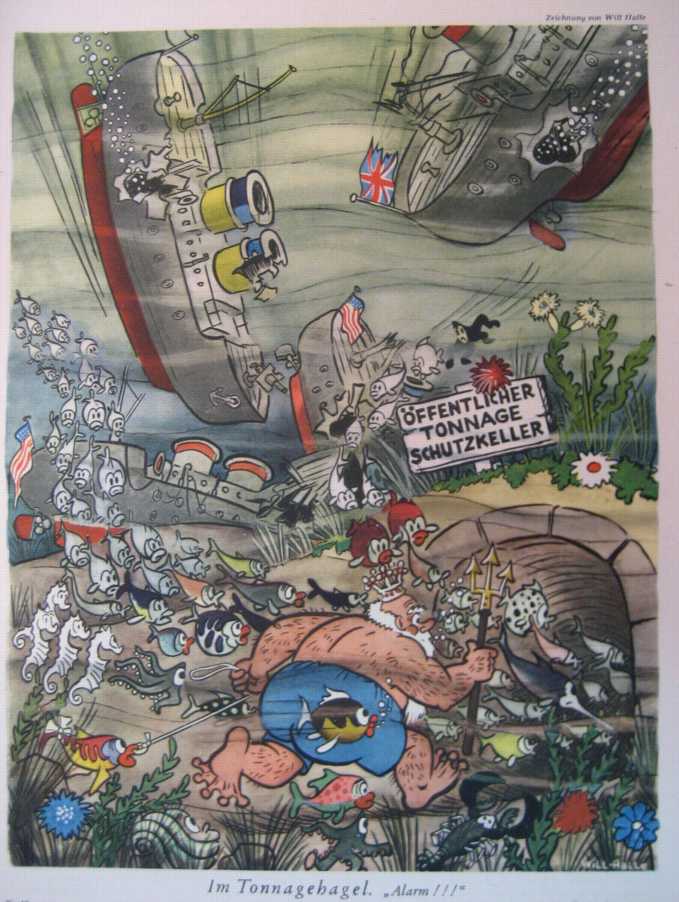
This cartoon appeared in spring of 1943, after Stalingrad, and during heavy Allied bombing raid. In this cartoon, the creatures of the deep are seeking shelter from the victims of German U-boats in a “Public Shelter from Sinking Ships.”
Source: Issue #18/1943

The caption: “The Polyp.” A Jew has his tentacles around England, Russia, the United States, and China.
Source: Issue #27/1943
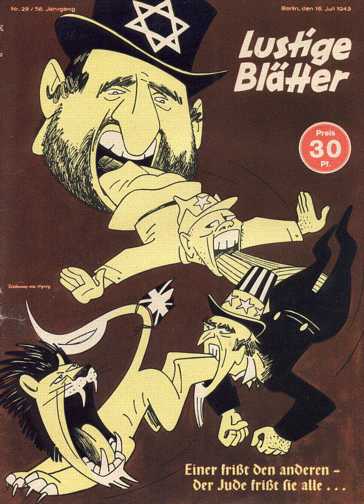
The caption: “One eats the other and the Jew devours them all...” The cartoon promotes the Nazi claim that the Jews were behind World War II, having orchestrated it to destroy Nazi Germany.
Source: Issue #29/1943
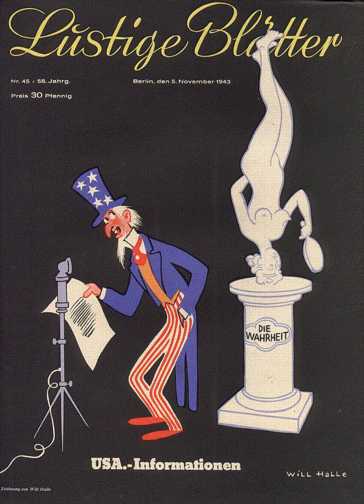
The caption: “Information from the USA.” Uncle Sam broadcasts while truth stands on her head.
Source: Issue #45/1943
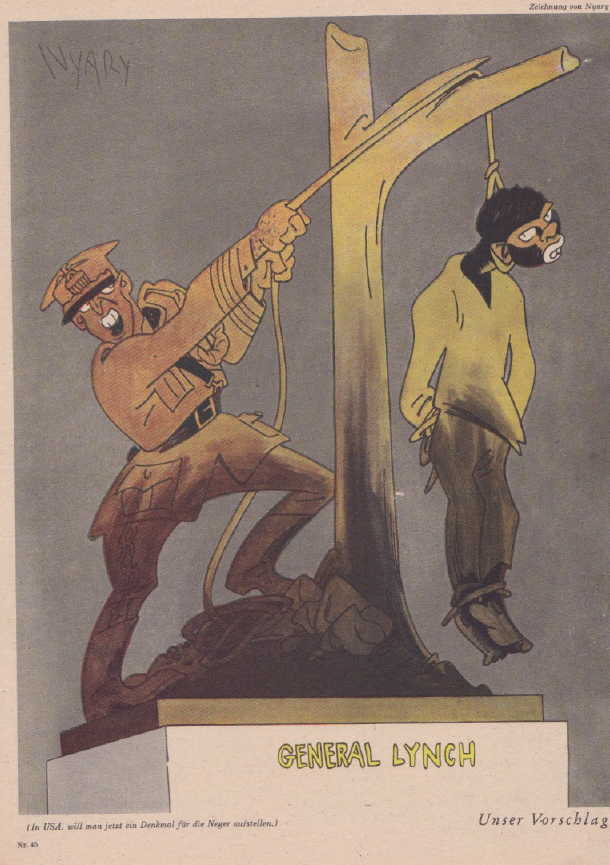
This cartoon titled “Our Proposal” notes that the USA is considering a monument to Negroes. The Nazis viewed Blacks as an inferior race, but they were still happy to use them to point out inconsistencies in American life.
Source: Issue #45/1943
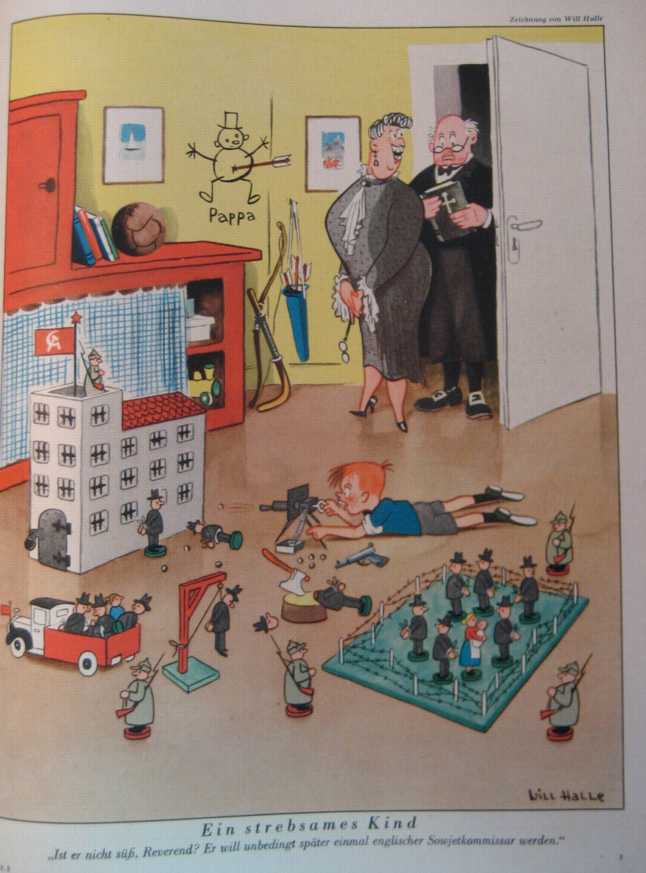
The caption: “An ambitious child.” The mother says: “Isn’t he sweet, Reverend? He wants to be an English Soviet commissar when he grows up.” The point was that the British, as Russian Allies, would end up Bolshevists themselves.
Source: Issue #7/1944
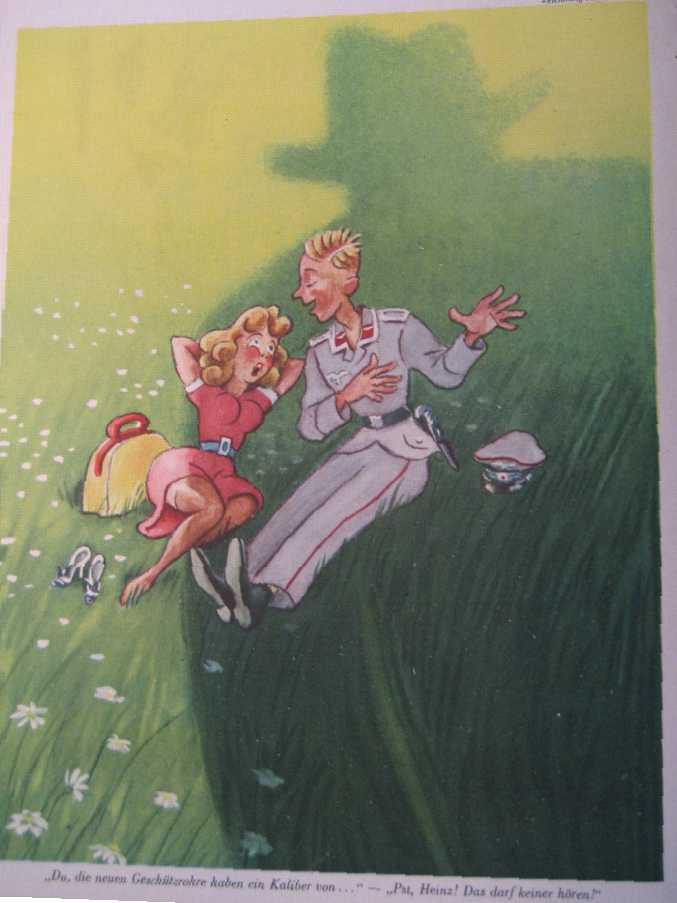
This cartoon was part of a propaganda campaign to make people cautious about talking in public, since enemy spies might be listening. The man is about to give the details of the latest gun, but his girlfriend warns him not to speak about it.
Source: Issue #17/1944
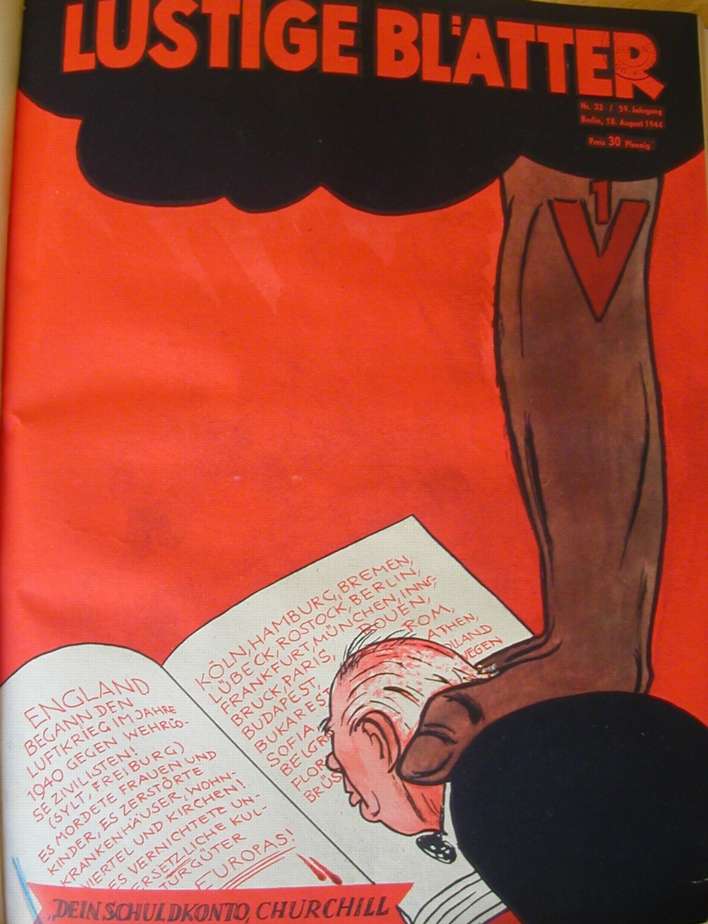
The caption: “Churchill's Debts.” Winston Churchill is being forced by the long arm of the V1 rocket to review his crimes. The first page says: “England began the air war against defenseless civilians in 1940! (Sylt and Freiburg). It murdered women and children. It destroyed homes, neighborhoods, and churches! It destroyed Europe's irreplaceable cultural treasures!” The other page lists European cities bombed by the Allies.
Source: Issue #33/1944
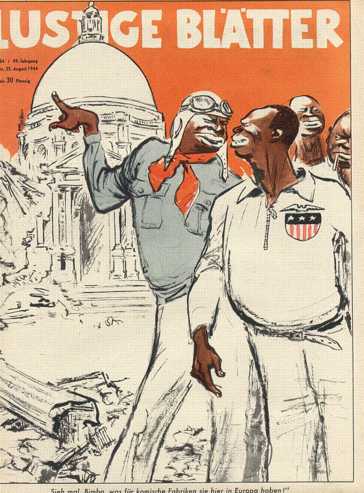
The caption: “Hey Bimbo, look at the funny factories they have here in Europe!” There was a flurry of cartoons on this theme. Nazi propaganda argued that Americans were sending ignorant black soldiers to destroy the cultured lands of Europe (led by Germany). This was a throwback to earlier Nazi propaganda against French colonial troops from Africa who had made up part of the occupation force after World War I.
Source: Issue #34/1944


